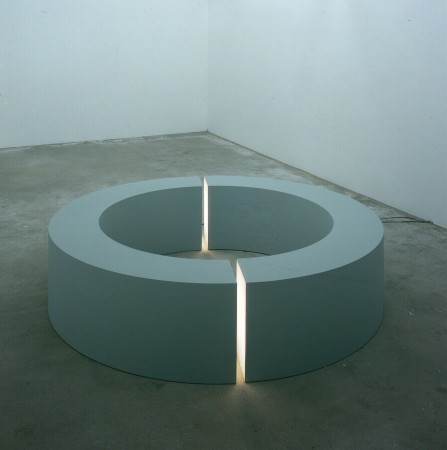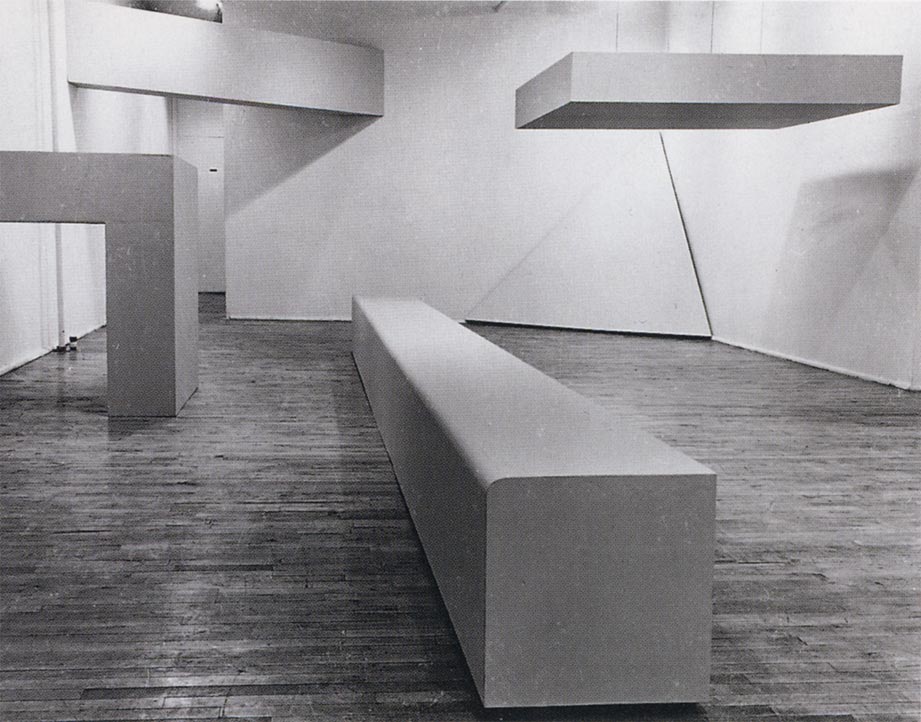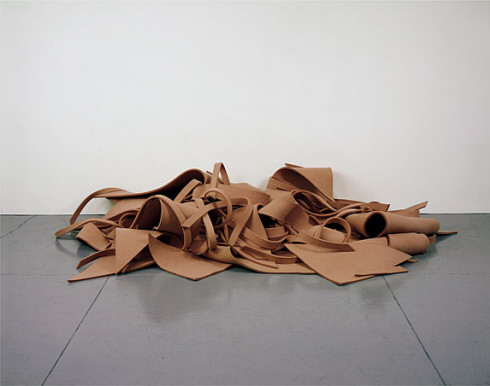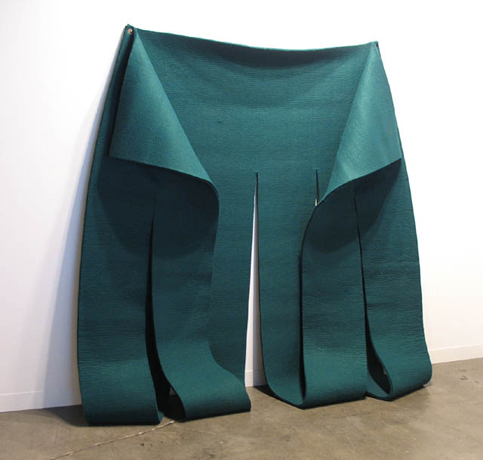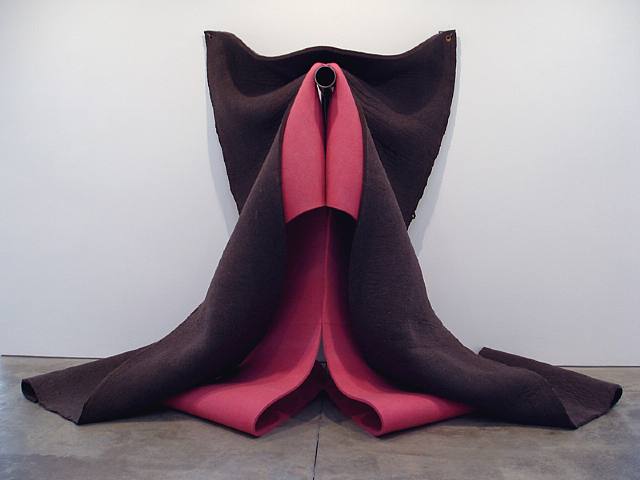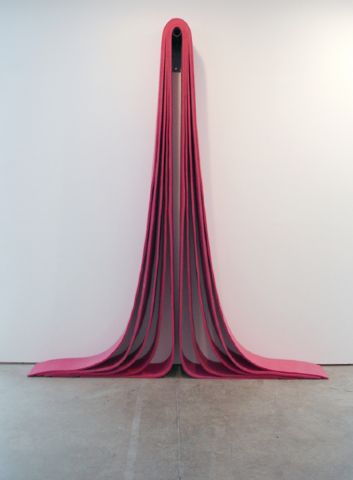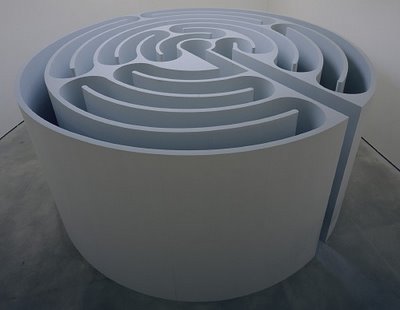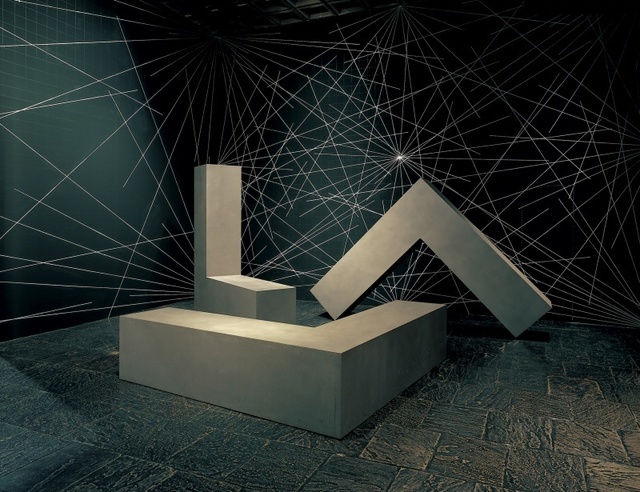<Back to Index>
- Sculptor Robert Morris, 1931
PAGE SPONSOR
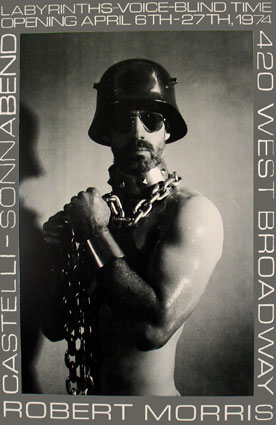
Robert Morris (February 9, 1931, Kansas City, Missouri - November 28, 2018) was an American sculptor, conceptual artist and writer. He is regarded as one of the most prominent theorists of Minimalism along with Donald Judd but he also made important contributions to the development of performance art, minimalism, land art, the Process Art movement and installation art. Morris lived and worked in New York.
Between 1948 and 1950, Morris studied engineering at the University of Kansas. He then studied art at both the University of Kansas and at Kansas City Art Institute as well as philosophy at Reed College. He interrupted his studies in 1951 - 52 to serve with the United States Army Corps of Engineers in Arizona and Korea. After moving to New York City in 1961 to study sculpture, he received a master's degree in art history in 1963 from Hunter College.
Initially a painter, Morris’ work of the 1950s was influenced by Abstract Expressionism and particularly Jackson Pollock. While living in California, Morris also came into contact with the work of La Monte Young and John Cage. The idea that art making was a record of a performance by the artist (drawn from Hans Namuth’s photos of Pollock at work) in the studio led to an interest in dance and choreography. During the 1950s, Morris thus grew interested in dance while living in San Francisco with his wife, the dancer and choreographer Simone Forti. Morris moved to New York in 1960 where he staged a performance based on the exploration of bodies in space in which an upright square column after a few minutes on stage falls over. Morris developed the same idea into his first Minimal Sculptures Two Columns shown in 1961, and L Beams (1965).
In New York, Morris began to explore the work of Marcel Duchamp making pieces that directly responded to Duchamp’s (Box with the Sound of its Own Making (1961), Fountain (1963)). In 1963 he had an exhibition of Minimal sculptures at the Green Gallery in New York that was written about by Donald Judd. The following year, also at Green Gallery, Morris exhibited a suite of large scale polyhedron forms constructed from 2 x 4s and gray painted plywood. In 1964 Morris devised and performed two celebrated performance artworks 21.3 in which he lip syncs to a reading of an essay by Erwin Panofsky and Site with Carolee Schneemann. Morris enrolled at Hunter College in New York (his masters thesis was on the work of Brancusi) and in 1966 published a series of influential essays "Notes on Sculpture" in Artforum. He exhibited two L Beams in the seminal 1966 exhibit, "Primary Structures" at the Jewish Museum in New York.
In 1967 Morris created Steam, an early piece of Land Art. By the late 1960s Morris was being featured in museum shows in America but his work and writings drew criticism from Clement Greenberg. His work became larger scale taking up the majority of the gallery space with series of modular units or piles of earth and felt. Untitled (Pink Felt) (1970), for example, is composed of dozens of sliced pink industrial felt pieces that have been dropped on the floor. In 1971 Morris designed an exhibition for the Tate Gallery that took up the whole central sculpture gallery with ramps and cubes. He published a photo of himself dressed in S&M gear in an advertisement in Artforum, similar to one by Lynda Benglis, with whom Morris had collaborated on several videos.
He created the Robert Morris Observatory in the Netherlands, a "modern Stonehenge", which identifies the solstices and the equinoxes.
During the later 1970s Morris switched to figurative work, a move that surprised many of his supporters. Themes of the work were often fear of nuclear war. During the 1990s returned to his early work supervising reconstructions and installations of lost pieces.
In 1974, Robert Morris advertised his display at the Castelli Gallery with a poster showing him bare chested in sadomasochistic garb. Critic Amelia Jones argued that the body poster was a statement about hyper masculinity and the stereotypical idea that masculinity equated to homophobia. Through the poster, Morris equated the power of art with that of a physical force, specifically violence.
Robert Morris's art is fundamentally theatrical. (...) his theater is one of negation: negation of the avant - gardist concept of originality, negation of logic and reason, negation of the desire to assign uniform cultural meanings to diverse phenomena; negation of a worldview that distrusts the unfamiliar and the unconventional. (Maurice Berger, Labyrinths: Robert Morris, Minimalism, and the 1960s)
Morris' first exhibition of paintings was held in 1957 at the Dilexi Gallery in San Francisco. Numerous museums have hosted solo exhibitions of his work, including the Whitney Museum of American Art in New York (1970), the Art Institute of Chicago (1980), the Museum of Contemporary Art, Chicago and the Newport Harbor Art Museum (1986), and the Corcoran Gallery of Art, Washington, D.C. (1990). In 1994, the Solomon R. Guggenheim Museum, New York, organized a major retrospective of the artist’s work, which traveled to the Deichtorhallen in Hamburg and the Musée National d'Art Moderne in Paris.
Morris was represented by Sonnabend Gallery, New York, and Sprüth Magers, Berlin / London. As a conceptual artist, Morris at times contractually removed from circulation. When a collector, the architect Philip Johnson, did not pay Morris for a work he had ostensibly purchased, the artist drew up a certificate of deauthorization that officially withdrew all aesthetic content from his piece, making it nonexistent as art.
